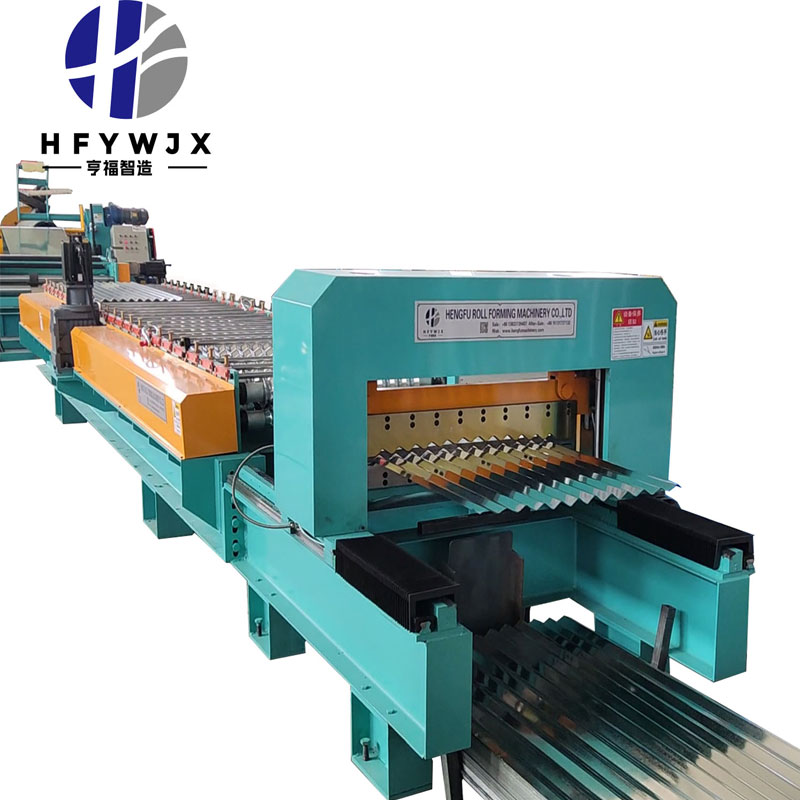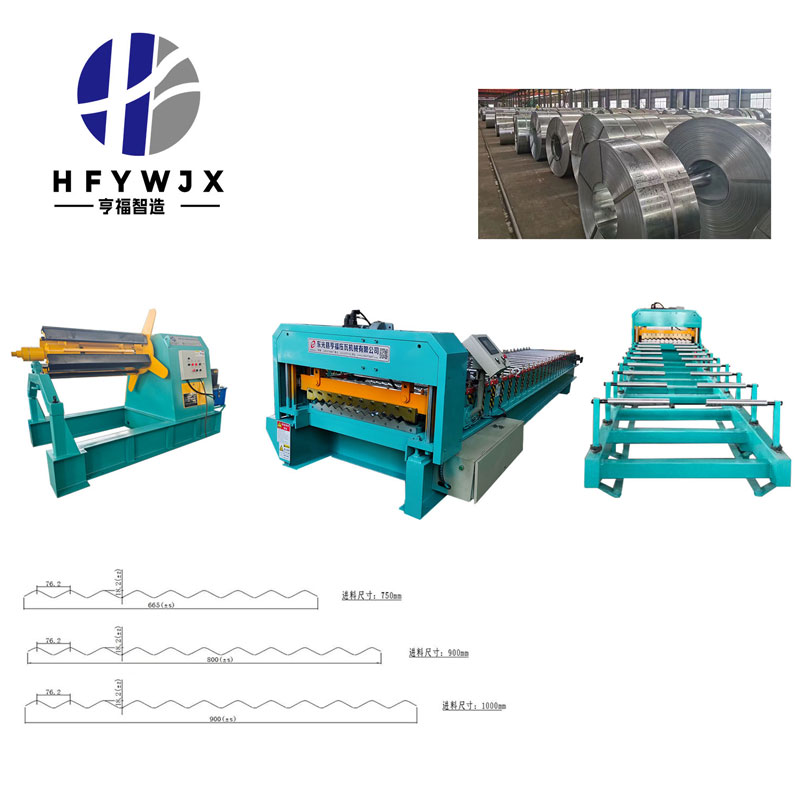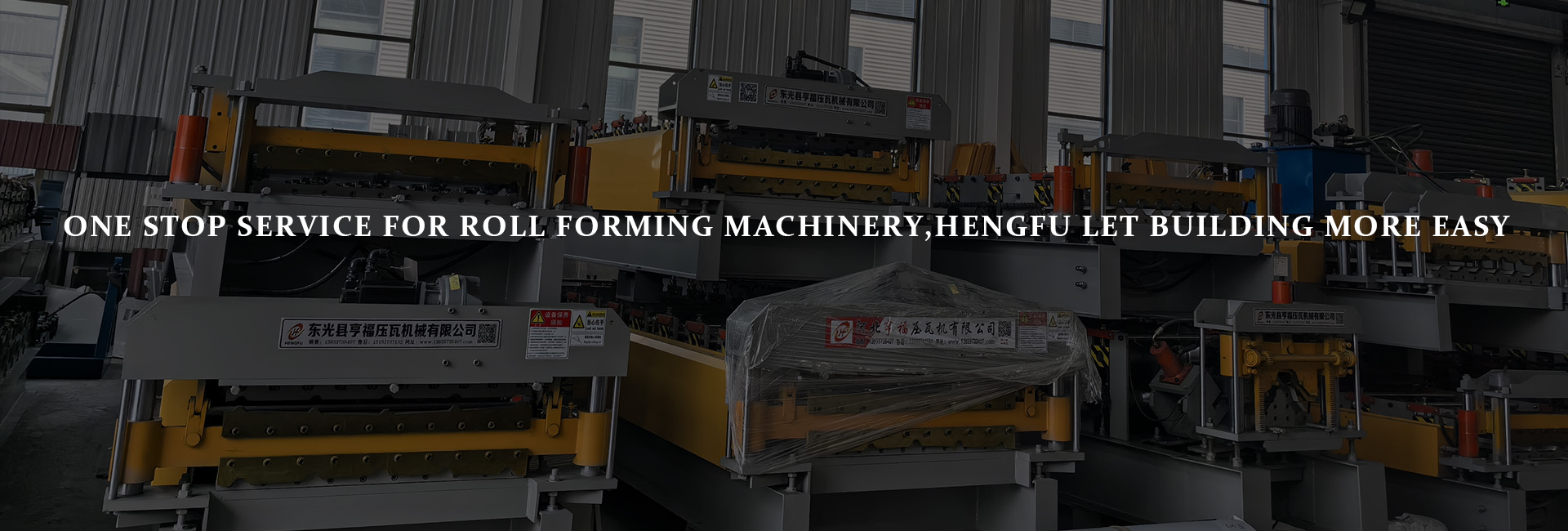The Quiet Transformation of Roll Forming Machine Control Systems
writer:优化 release time:2025-10-16 19:56:00 Views:142frequency
Industrial manufacturing is undergoing a subtle yet impactful shift, especially in the Roll Forming Machine sector. Modern control technologies are quietly redefining operational efficiency, accuracy, and workflow flexibility. With increasing demand for high-performance production, these systems have become central to staying competitive in global markets.
A growing number of China manufacturers are leading this transformation, delivering machines that combine bulk supply capacity with customizable control options tailored to diverse industrial applications.


From Manual Operation to Intelligent Control
Traditionally, roll forming machines required skilled operators to manually adjust rollers, pressure, and material alignment. Minor inconsistencies could lead to wasted material, defective panels, and production delays.
Today, modern Roll Forming Machines incorporate digital control systems, PLCs, and automated monitoring, providing real-time adjustments and predictive feedback. The results include:
·Uniform panel dimensions with minimal deviation
·Reduced scrap rates and material waste
·Enhanced energy efficiency
·Faster production cycles with less manual intervention
China suppliers have accelerated adoption worldwide by providing cost-effective solutions that combine automation, high precision, and bulk manufacturing capabilities.
Key Features of Modern Control Systems
1. Programmable Logic Controllers (PLC)
PLCs automate roller sequences, pressure control, and speed adjustments. Operators can program multiple profiles in advance, allowing seamless transitions between panel types without downtime.
2. Servo Motor Integration
Servo-driven rollers enable accurate, synchronized movement for complex or non-standard profiles. This precision minimizes production errors and enhances product consistency.
3. Sensor Networks and Feedback Loops
Sensors monitor alignment, tension, and thickness continuously. Feedback loops adjust roller pressure and speed dynamically, ensuring optimal results and minimizing defects.
4. User-Friendly Interfaces
Modern HMIs display performance data, maintenance alerts, and operational guidance. These interfaces allow operators to manage machines efficiently, reducing reliance on specialized technical skills.
Advantages for Manufacturers
·Increased Throughput
Automation streamlines production, reduces downtime, and accelerates setup, enabling manufacturers to produce more panels per shift.
·Improved Quality and Reduced Waste
Consistent monitoring and intelligent adjustments lower scrap rates and ensure tight tolerances, essential for construction, automotive, and industrial applications.
·Energy-Efficient Operations
Optimized hydraulic systems and energy-conscious drives reduce electricity consumption and support eco-friendly production goals.
·Flexible Production
Machines can easily switch between panel types and materials, offering adaptability for evolving product requirements.


China Suppliers: Bulk Production and Custom Solutions
One of the main drivers of this technological adoption is the strategic advantage of China suppliers and China manufacturers. Many can deliver multiple machines at scale while offering tailored configurations for specific production needs.
Benefits of sourcing from China include:
·Reliable bulk supply to support large industrial installations
·Tailored engineering for various metal profiles and thicknesses
·Competitive pricing without compromising quality
·Fast parts availability and responsive after-sales support
Partnering with a reputable China manufacturer ensures access to advanced control systems, high-quality components, and technical guidance for smooth integration.
Practical Applications
Roll forming machines with modern control systems are now widely applied across industries:
·Construction: Producing high-precision roofing and wall panels.
·Automotive: Manufacturing lightweight components for large-scale assembly.
·Renewable Energy: Forming solar panel mounting structures with strict tolerances.
·Industrial Fabrication: Creating custom metal profiles for machinery and frameworks.
These cases demonstrate that advanced control systems do more than improve efficiency — they provide a competitive advantage in precision and adaptability.
Maintenance for Long-Term Reliability
Even with intelligent controls, consistent maintenance is key:
·Calibrate sensors and controllers regularly
·Inspect servo motors and hydraulic components
·Update PLC programs for new profiles
·Clean rollers and guides to prevent material buildup
·Monitor energy usage for early signs of inefficiency
Routine upkeep ensures that Roll Forming Machines maintain peak performance and longevity.
Looking Ahead: Trends for 2026
The future of Roll Forming Machine control emphasizes:
·Predictive Maintenance via AI to prevent unexpected downtime
·IoT Connectivity for remote monitoring and performance analytics
·Hybrid Automation Systems that combine mechanical reliability with smart control
·Energy-Efficient, Sustainable Production in line with industrial regulations
Manufacturers adopting these trends will position themselves at the forefront of precision, efficiency, and innovation.
Conclusion
The quiet transformation of Roll Forming Machine control is redefining industrial production. Automation, sensor-driven feedback, and intelligent software enable higher productivity, lower waste, and improved energy efficiency.
Selecting a China supplier or China manufacturer with bulk supply capabilities and technical customization ensures that factories can implement these advanced machines smoothly and reliably.
For industrial buyers, embracing these innovations is no longer optional — it is essential to maintain competitiveness and achieve long-term operational excellence.
References
GB/T 7714:Shi B Y, Li Q, Guan Y Z, et al. Research on Control System of Roll Forming Production Line with Fixed Mould and Moving Roll of Variable Cross-section[J]. Applied Mechanics and Materials, 2015, 722: 164-172.
MLA:Shi, Bi Ying, et al. "Research on Control System of Roll Forming Production Line with Fixed Mould and Moving Roll of Variable Cross-section." Applied Mechanics and Materials 722 (2015): 164-172.
APA:Shi, B. Y., Li, Q., Guan, Y. Z., & Wang, S. (2015). Research on Control System of Roll Forming Production Line with Fixed Mould and Moving Roll of Variable Cross-section. Applied Mechanics and Materials, 722, 164-172.







